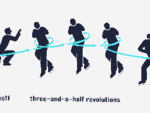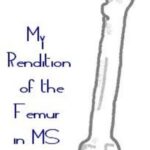ACL Knee Surgery, the First 3 Days
There are 4 major ligaments in the knee, and the ACL or anterior cruciate ligament is one of these. It is an important ligament to stabilize the knee as it connects the femur bone to the tibia bone. It is very common to injure this ligament while playing sports. Once this ligament is torn, surgery is often recommended to reconstruct the ligament. Here is a first-hand account of the first 3 days following ACL reconstruction knee surgery.
Day of Surgery: Surgery took place at an outpatient surgery center where many types of surgery are performed. We arrived 1-1/2 hours prior to the planned surgical procedure. After signing consent for the knee surgery, the patient was brought to a presurgical bed in large room with many smaller rooms curtained off. There was a nurse’s station right across the hall. The patient changed into a hospital gown and an IV line was inserted into the arm. About an hour later, an anesthesiologist arrived to discuss anesthesia that would be performed during the knee surgery. It was recommended that the patient have a nerve block procedure in addition to general anesthesia. The nerve block is anesthesia which is injected into the sciatic and femoral nerves in order to numb or paralyze the entire leg. After the patient elected to undergo the nerve block with the general anesthesia, the patient was given a mild sedative called Versed to relax the patient. Then the anesthesiologist and assistant performed the nerve block procedure to the surgical leg. This was performed by inserting a needle and causing the leg muscles to jump and quiver. This helped the anesthesiologist to ensure that the injection site was correct. The entire procedure lasted approximately 15 minutes. Following the procedure, the patient’s leg quickly became numb. The patient was very relaxed and unconcerned about the procedure and upcoming knee surgery.
Following surgery, the patient was brought to the recovery room to recover from the general anesthesia and stabilize vital signs. The patient’s family was invited to see the patient approximately 1-1/2 hours after the knee surgery. The patient’s surgical leg was wrapped snugly in gauze, cotton padding, an Ace wrap and a locked knee brace in a straight-leg position. The patient was sitting up, feeling a bit cold and groggy. The nurse instructed the patient many times to take slow, deep breaths to help keep the oxygen level high. The patient felt a bit queasy, but had no nausea or vomiting. The patient had been given Zofran anti-nausea medicine in the IV line during the knee surgery. Soon the nurse gave the patient a cup of juice and a few crackers followed by a pain tablet. A Don-Joy Iceman machine was hooked up to the patient. This is basically a small ice-chest cooler filled with ice water with a hose and pump assembly which attaches to a pad which is wrapped around the knee under the Ace wrap. The machine is powered by electricity and has a thermometer attached to maintain appropriate circulating water temperature in the pad. The patient was told to either run the machine continuously or try one hour on then one hour off, but to avoid letting it get too cold until the nerve block subsides in the surgical knee. This usually happens within 8-24 hours. In the meantime, the leg with the nerve block feels paralyzed and the patient is unable to move it at all; however, there is also no pain.
About 2 hours after the end of the knee surgery, the patient was wheeled out to the family’s car, and by using the help of 2 nurses and a pair of crutches was able to get into the car, lying in the back seat, because the leg was straight and could not be seated properly in a car seat. Once at home, the patient was able to walk into the house using crutches and the assistance of two people, one steadying the patient on the crutches, and the other carrying the “dead weight” leg. The first night home, the patient rested and slept with the leg elevated. The caregiver administered pain medication, anti-nausea medication, and aspirin to prevent blood clots at regular intervals. Snacks had to be given with each pain medication dose to prevent stomach upset. The Ice-Man also had to be changed every 2-3 hours with fresh ice, and manually turned off and on throughout the night to prevent the temperature from getting too cold on the surgical knee.
Day 2: The following day the patient experienced no knee pain because the block was still in effect, and lasted for the full 24 hours in this case. Gradually the toes began to tingle and the patient was able to move them, then the leg tingled and quadriceps muscle spasmed and quivered. Then it was very important to keep the pain medication on a regular schedule every 4 hours along with snacks. In the late afternoon of day 2, the surgical bandages needed to be changed. The caregiver removed the straight-leg brace, the Ace wrap, the Don-Joy pad, and found thick cotton padding, and removed that. Underneath there were cotton bandage square pads, and underneath that were the port holes covered with Steri-Strips. There are usually 6 port holes for ACL reconstruction knee surgery. The leg was orange in color due to the iodine used prior to the knee surgery to cleanse the leg. The leg was cleansed with special lotion to remove the iodine and gently wiped with wet cloth, being careful to not get lotion or water near the Steri-Strip covered port holes. Then clean sterile gauze pads were placed over the port holes and the leg was rewrapped with cotton padding, Ace Wrap and Don-Joy cooling pad, and then the brace was applied. It is important not to let Don-Joy cooling pad to directly touch the skin. The remainder of the day the patient rested and performed quadriceps tightening exercises with the brace on and gentle straight leg raises with the brace on. A few times the patient sat on the edge of bed and gently let gravity bend the knee slightly. These were all instructions given by the knee surgery team.
Day 3: The patient was able to be much more mobile today using crutches, applying very slight weight onto the leg. The patient was able to do more self-care and had more of an appetite, needed less pain medication. Overall the patient was feeling much better and had a feeling that the worst was over as far as the knee surgery was concerned, and was looking forward to beginning the rehabilitation phase. There was a follow-up appointment with the surgeon where the patient was told the knee looked great, there was no infection, and the swelling was minimal. Okay to start physical therapy the next day and begin the 4-6 weeks of intense physical therapy needed to gain full range of motion and strength to the reconstructed anterior cruciate ligament.





